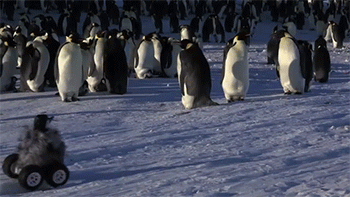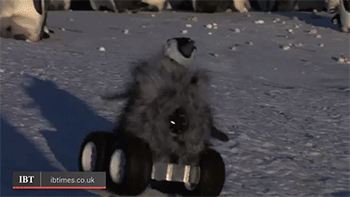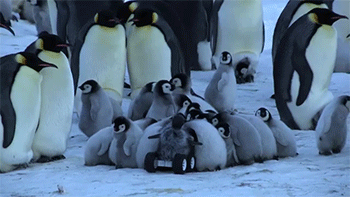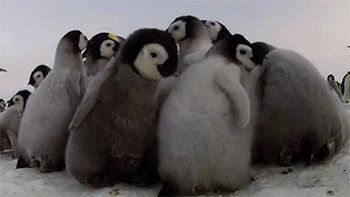Quantum Computers Have Arrived.


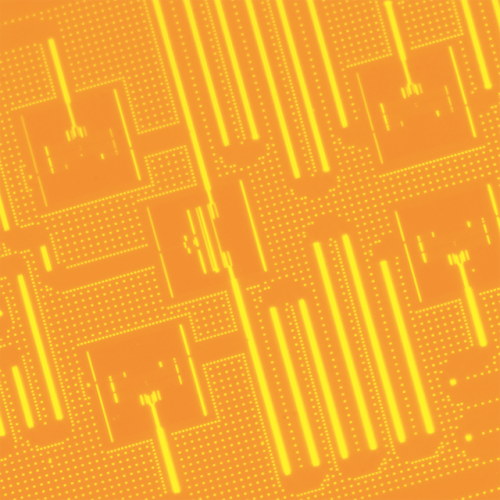
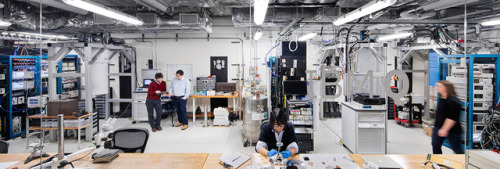
Quantum computers have arrived.
First there was the mainframe, then came the personal computer, now we’ve reached a new monumental landmark in the history of technology. For the first time ever, IBM aims to bring universal quantum computers out of the lab and into the commercial realm. Projected to sift through vast possibilities and data, to choose the perfect option or discover unseen patterns, quantum computing is poised to drive a new era of innovation across industries. This means that some of the world’s most complex problems now have a chance of being solved. And as the quantum eco-system grows, a seemingly impossible kind of physics could start to make the most incredible things possible.
Learn More →
More Posts from Science-is-magical and Others
Paint colors designed by neural network, Part 2

So it turns out you can train a neural network to generate paint colors if you give it a list of 7,700 Sherwin-Williams paint colors as input. How a neural network basically works is it looks at a set of data - in this case, a long list of Sherwin-Williams paint color names and RGB (red, green, blue) numbers that represent the color - and it tries to form its own rules about how to generate more data like it.
Last time I reported results that were, well… mixed. The neural network produced colors, all right, but it hadn’t gotten the hang of producing appealing names to go with them - instead producing names like Rose Hork, Stanky Bean, and Turdly. It also had trouble matching names to colors, and would often produce an “Ice Gray” that was a mustard yellow, for example, or a “Ferry Purple” that was decidedly brown.
These were not great names.

There are lots of things that affect how well the algorithm does, however.
One simple change turns out to be the “temperature” (think: creativity) variable, which adjusts whether the neural network always picks the most likely next character as it’s generating text, or whether it will go with something farther down the list. I had the temperature originally set pretty high, but it turns out that when I turn it down ever so slightly, the algorithm does a lot better. Not only do the names better match the colors, but it begins to reproduce color gradients that must have been in the original dataset all along. Colors tend to be grouped together in these gradients, so it shifts gradually from greens to browns to blues to yellows, etc. and does eventually cover the rainbow, not just beige.
Apparently it was trying to give me better results, but I kept screwing it up.
Raw output from RGB neural net, now less-annoyed by my temperature setting

People also sent in suggestions on how to improve the algorithm. One of the most-frequent was to try a different way of representing color - it turns out that RGB (with a single color represented by the amount of Red, Green, and Blue in it) isn’t very well matched to the way human eyes perceive color.
These are some results from a different color representation, known as HSV. In HSV representation, a single color is represented by three numbers like in RGB, but this time they stand for Hue, Saturation, and Value. You can think of the Hue number as representing the color, Saturation as representing how intense (vs gray) the color is, and Value as representing the brightness. Other than the way of representing the color, everything else about the dataset and the neural network are the same. (char-rnn, 512 neurons and 2 layers, dropout 0.8, 50 epochs)
Raw output from HSV neural net:

And here are some results from a third color representation, known as LAB. In this color space, the first number stands for lightness, the second number stands for the amount of green vs red, and the third number stands for the the amount of blue vs yellow.
Raw output from LAB neural net:

It turns out that the color representation doesn’t make a very big difference in how good the results are (at least as far as I can tell with my very simple experiment). RGB seems to be surprisingly the best able to reproduce the gradients from the original dataset - maybe it’s more resistant to disruption when the temperature setting introduces randomness.
And the color names are pretty bad, no matter how the colors themselves are represented.
However, a blog reader compiled this dataset, which has paint colors from other companies such as Behr and Benjamin Moore, as well as a bunch of user-submitted colors from a big XKCD survey. He also changed all the names to lowercase, so the neural network wouldn’t have to learn two versions of each letter.
And the results were… surprisingly good. Pretty much every name was a plausible match to its color (even if it wasn’t a plausible color you’d find in the paint store). The answer seems to be, as it often is for neural networks: more data.
Raw output using The Big RGB Dataset:

I leave you with the Hall of Fame:
RGB:

HSV:

LAB:

Big RGB dataset:


Monkey sees… monkey knows?
Socrates is often quoted as having said, “I know that I know nothing.” This ability to know what you know or don’t know—and how confident you are in what you think you know—is called metacognition.
When asked a question, a human being can decline to answer if he knows that he does not know the answer. Although non-human animals cannot verbally declare any sort of metacognitive judgments, Jessica Cantlon, an assistant professor of brain and cognitive sciences at Rochester, and PhD candidate Stephen Ferrigno, have found that non-human primates exhibit a metacognitive process similar to humans. Their research on metacognition is part of a larger enterprise of figuring out whether non-human animals are “conscious” in the human sense.
In a paper published in Proceedings of the Royal Society B, they report that monkeys, like humans, base their metacognitive confidence level on fluency—how easy something is to see, hear, or perceive. For example, humans are more confident that something is correct, trustworthy, or memorable—even if this may not be the case—if it is written in a larger font.
“Humans have a variety of these metacognitive illusions—false beliefs about how they learn or remember best,” Cantlon says.
Because other primate species exhibit metacognitive illusions like humans do, the researchers believe this cognitive ability could have an evolutionary basis. Cognitive abilities that have an evolutionary basis are likely to emerge early in development.
“Studying metacognition in non-human primates could give us a foothold for how to study metacognition in young children,” Cantlon says. “Understanding the most basic and primitive forms of metacognition is important for predicting the circumstances that lead to good versus poor learning in human children.”
Cantlon and Ferrigno determined that non-human primates exhibited metacognitive illusions after they observed primates completing a series of steps on a computer:

The monkey touches a start screen.
He sees a picture, which is the sample. The goal is to remember that sample because he will be tested on this later. The monkey touches the sample to move to the next screen.
The next screen shows the sample picture among some distractors. The monkey must touch the image he has seen before.
Instead of getting a reward right away—to eliminate decisions based purely on response-reward—the monkey next sees a betting screen to communicate how certain he is that he’s right. If he chooses a high bet and is correct, three tokens are added to a token bank. Once the token bank is full, the monkey gets a treat. If he gets the task incorrect and placed a high bet, he loses three tokens. If he placed a low bet, he gets one token regardless if he is right or wrong.
Researchers manipulated the fluency of the images, first making them easier to see by increasing the contrast (the black image), then making them less fluent by decreasing the contrast (the grey image).


The monkeys were more likely to place a high bet, meaning they were more confident that they knew the answer, when the contrast of the images was increased.
“Fluency doesn’t affect actual memory performance,” Ferrigno says. “The monkeys are just as likely to get an answer right or wrong. But this does influence how confident they are in their response.”
Since metacognition can be incorrect through metacognitive illusion, why then have humans retained this ability?
“Metacognition is a quick way of making a judgment about whether or not you know an answer,” Ferrigno says. “We show that you can exploit and manipulate metacognition, but, in the real world, these cues are actually pretty good most of the time.”
Take the game of Jeopardy, for example. People press the buzzer more quickly than they could possibly arrive at an answer. Higher fluency cues, such as shorter, more common, and easier-to-pronounce words, allow the mind to make snap judgments about whether or not it thinks it knows the answer, even though it’s too quick for it to actually know.
Additionally, during a presentation, a person presented with large amounts of information can be fairly confident that the title of a lecture slide, written in a larger font, will be more important to remember than all the smaller text below.
“This is the same with the monkeys,” Ferrigno says. “If they saw the sample picture well and it was easier for them to encode, they will be more confident in their answer and will bet high.”
The Brain Can Reveal Drinking Status Even After Death
Scientists who use postmortem brain tissue to study alcohol’s effects on brain structure and function will find this research interesting. Phosphatidylethanol (PEth) is an alcohol metabolite and its concentration in whole blood samples is a biomarker of drinking habits. For this study, scientists examined PEth levels in postmortem brains of individuals known to have had alcohol use disorders (AUDs).
Researchers divided 30 postmortem brains into three groups: 10 with AUDs that had positive serum alcohol levels present at the time of autopsy; 10 with AUDs that did not show positive serum alcohol levels at the time of autopsy; and 10 normal brains. PEth levels were measured in the cerebellum and orbital frontal cortex (OFC) regions.
Results showed that PEth was present in the cerebellum and OFC of all brains in all three groups of subjects, including the controls. The AUD group with detectable serum alcohol levels at the time of autopsy had much higher levels of PEth in both brain areas than either the control group or the AUD group whose subjects did not have detectable serum ethanol at autopsy. Thus, the ability to measure PEth levels in postmortem human brains can be helpful in classifying drinking status in individuals with AUDs at the time of death.

Birds developed the unique vocal organ that enables them to sing more than 66 million years ago when dinosaurs walked the Earth, a new fossil discovery has shown.
But the earliest syrinx, an arrangement of vibrating cartilage rings at the base of the windpipe, was still a long way from producing the lilting notes of a song thrush or blackbird.
Scientists believe the extinct duck and goose relative that possessed the organ was only capable of making honking noises.
The bird, Vegavis iaai, lived during the Cretaceous era. Although its fossil bones were unearthed from Vega Island in Antarctica in 1992, it was not until three years ago that experts spotted the syrinx.
All birds living today are descended from a particular family of dinosaurs that developed feathers and the ability to fly.
The new discovery suggests the syrinx is another hallmark of birds that was absent from non-avian dinosaurs…

Small balloons exert higher pressure ???!!!
If you are aware that flow occurs only from a higher pressure to a lower pressure, then the balloon demonstration must have startled you.
This is because according to the demo, the smaller balloon is under high pressure. How is this even possible ?
Have you been this guy ?

Sucks big time right ? Its so hard to initially inflate the balloon,! But once you get going, its an easier task to handle. Here’s an intuitive explanation :
Pressure is really the force that molecules exert on the surface.
When you make that initial blow, you are adding a significantly large number of molecules into the balloon. (think of it as adding a lot of people in a very small room ) And as a result, the molecules exert a high pressure.

But once the balloon is inflated, the molecules have lot of room to move around, so they do not do around bombarding the surface that often. Hence the decreasing pressure.
( the rate at which room size increases is more than sufficient enough to accommodate the people in it )/

Variation of pressure v/s radius
This goes by the name - Two balloon experiment. Click here for a more technical explanation.
** DO TRY THIS AT HOME
I encourage you to try this at home to truly appreciate the demonstration. If you have only balloon, then inflate it fully, and then release it by holding the balloon by its neck;

Feel the pressure of the air that is coming out. ( If will increase as the balloon size decreases )

Have a great day!

This is what a star nursery looks like
Astronomers have spotted a beautiful blue ribbon in space that will one day ignite into a cluster of baby stars.
Astronomers try to track down hot spots for new stars by searching for clouds of dust in gas in the coldest parts of the Milky Way. The ESA’s Herschel space observatory is giving us rare glimpses inside these super-cold star nurseries.
The blue ribbon in this new image shows the coldest part of the cloud. It’s about minus 259 degrees Celsius and holds about 800 times the mass of the sun. Soon all that mass will crunch together and sprout new stars. Yet, one big piece of the star-birth puzzle is still a mystery.
Follow @the-future-now
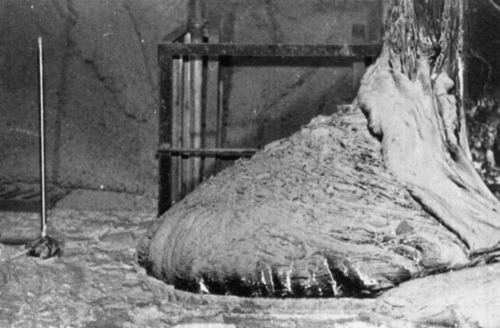
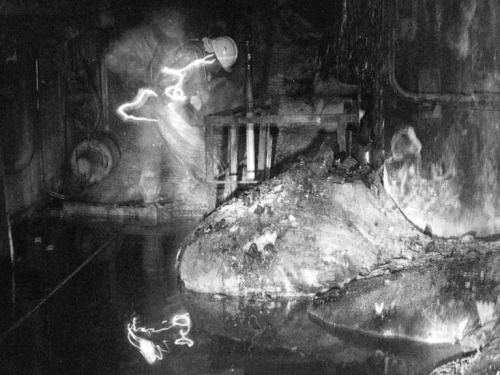
One of the most dangerous pictures ever taken - Elephant’s Foot, Chernobyl. This is a photo of a now dead man next the ‘Elephant’ Foot’ at the Chernobyl power plant.
The image distortions in the photo are created by intense level of radiation almost beyond comprehension. There is no way the person in this photo and the person photographing him could have survived for any more that a few years after being there, even if they quickly ran in, took the photos and ran out again. This photo would be impossible to take today as the rates of radioactive decay are even more extreme now due to a failed military experiment to bomb the reactor core with neuron absorbers. The foot is made up of a small percentage of uranium with the bulk mostly melted sand, concrete and other materials which the molten corium turns into a kind of lava flow. In recent years, it has destroyed a robot which tried to approach it, and the last photos were taken via a mirror mounted to a pole held at the other end of the corridor for a few seconds. It is almost certainly the most dangerous and unstable creation made by humans. These are the effects of exposure: 30 seconds of exposure - dizziness and fatigue a week later 2 minutes of exposure - cells begin to hemorrhage (ruptured blood vessels) 4 minutes - vomiting, diarrhea, and fever 300 seconds - two days to live
-
 fasterapplecore reblogged this · 1 year ago
fasterapplecore reblogged this · 1 year ago -
 fasterapplecore liked this · 1 year ago
fasterapplecore liked this · 1 year ago -
 dragalsofeca liked this · 1 year ago
dragalsofeca liked this · 1 year ago -
 bulldawg-13 liked this · 2 years ago
bulldawg-13 liked this · 2 years ago -
 sizzlingcowboydeputyangel liked this · 2 years ago
sizzlingcowboydeputyangel liked this · 2 years ago -
 sizzlingcowboydeputyangel reblogged this · 2 years ago
sizzlingcowboydeputyangel reblogged this · 2 years ago -
 epicuross liked this · 3 years ago
epicuross liked this · 3 years ago -
 professor-doc-emeritus reblogged this · 4 years ago
professor-doc-emeritus reblogged this · 4 years ago -
 professor-doc-emeritus liked this · 4 years ago
professor-doc-emeritus liked this · 4 years ago -
 dayspreceding liked this · 4 years ago
dayspreceding liked this · 4 years ago

